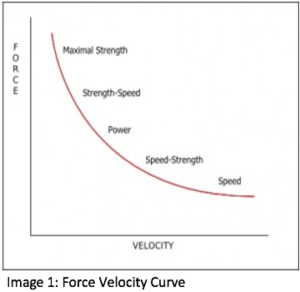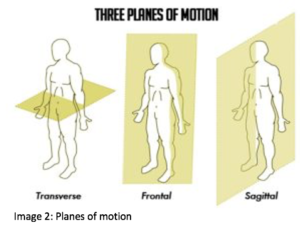
02 Jul Training for Strength & Power – By Ben Smalley MSc & Caoimhe Morris MSc
By Ben Smalley (BSc, Msc) – DSS Sports Science and Caoimhe Morris (BA, MSc) – DSS Head of Education.
Download PDF Version here:
Blog 1- Training for Strength & Power – 2
Introduction
Strength & Power development are two vital elements of Strength and Conditioning (S&C) training. When we speak of strength, we refer to the ability of muscles to produce force. Power however is the rate (velocity) at which this force is produced (1).
We know from the research that strength is a vital foundation for athleticism, as it underpins so many physical qualities (3). Strength is the main driver in the ability to express high power outputs (Force x Velocity) and so strength training should always be present in the programme1. It should be noted that sporting actions are occurring at faster rates than maximal force can be expressed, therefore tailoring training to develop force production and force acceptance qualities at high velocities will likely maximise transfer to performance and injury reduction.
A method for increasing strength and power is by programming physical training across the Force-Velocity (FV) curve (1) (Image 1). By doing so, you address a variety of loads and velocities, which help prepare the body to handle a range of production & absorption demands. Emphasis along this curve will depend on the demands of the sport and the training age of the athlete.
Methods for Development
Resistance training, Jumps / Plyometrics, Sprinting
Benefits to Strength and Power Training
- Greater peak force
- Enhanced Rate of Force Development (ability to apply force quickly)
- Reduced Injury Risk (2)
- Strengthen muscle / connective tissue
Strength = The ability to generate force
Power = The rate at which force is produced


Programming
For field-based, team sport athlete’s, we need to address the entire FV curve (Image 1) across all three planes of motion (Image 2). In addition, both unilateral (single limb) and bilateral (double limb) variations should be incorporated. Some examples are shown below:
Lower Body Power
Lower Body Strength
•Knee dominant – E.G. squatting and lunging patterns
•Hip dominant – E.G. hinging patterns (deadlift, hip thrust variations)
•Frontal / transverse plane – E.G. something side-to-side or rotational (lateral or rotational lunge)
•Distal hamstring work (knee dominant variations) E.G. Nordics
•Standing calf work (gastrocnemius), Seated calf work (soleus)
Upper Body Power
Ballistic actions and high velocity weight training. E.G High pulls, push jerks, MB variations.
Upper Body Strength
- Horizontal push – E.G. bench press
- Horizontal pull – E.G. barbell row
- Vertical push – E.G. overhead press
- Vertical pull – E.G. chin up
Trunk
The trunk is vital in facilitating the transference of forces through the kinetic chain and it’s position & activation in a movement (or lack thereof) can often be the deciding factor in injury occurrence. It is important to train and challenge the trunk in a wide range of positions, and so coaches should include both anterior and lateral bracing movements as well as rotational and flexion-based work, out of dynamic, prone, supine, kneeling and standing positions in their programming.
Injury reduction and player wellbeing are always at the forefront, and so it is also important to systematically & incrementally progress exercises, so athletes are getting the appropriate stimulus at the appropriate time. This will ensure athletes progress in a safe and effective manner.
An example of a progression model is that of Graeme Morris. His excellent article – ‘The Guiding Principles of Training’ can be found on Rugbystrengthcoach.com.
Example One
A sequence you may take your athlete through to enhance lower body power through vertical jumping progressions is shown below.
We first establish landing mechanics as well as developing force acceptance qualities in block one, before progressing to jumps with a concentric component in blocks two and three.

Example Two
A sequence you may take your athlete through to build vertical pressing strength to lay a foundation before training with higher velocities may be as shown below.

Conclusion
Strength and power are both vital elements of athletic performance. The development of both must be a holistic, whole body method and ensure that the body is equipped to not only produce force, but to also absorb and control it.
There are many methods to do this, however coaches should take into account:
The sport and the individual athlete’s needs when designing a strength and power development programme.
Strength & Power development will help increase speed, strength and control, help reduce injury risk and will equip the athlete with the tools to improve sport performance.Therefore, it is strongly advised that strength and power are considerations in all S&C programmes.
DSS Online Training –
We are now currently offering online training tailored to individual needs.
We are offering varying pricing strategy which are outlined within the following link: https://elite.deelysportscience.com/dss-online-training/
This training support includes:
This support will be provided to you through the RYPT app. A fantastic resource for online training allowing top performance coaches to send programmes directly to your phone each week.
The App includes:
(To find out more visit their site at: https://www.rypt.app)
To gain access to a 2 month free trial to the RYPT app – click on the link here:
References



No Comments